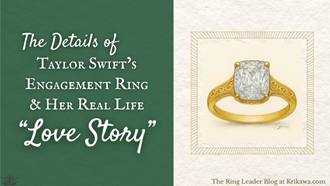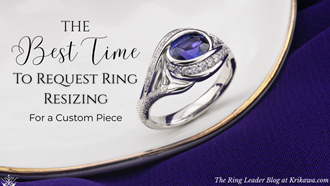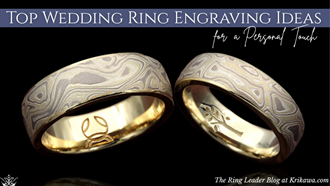< Home
Close main menu
Engagement Rings
Wedding Bands
Men's Rings
Mokumé-Gané Rings
Specialty
Center Stones
Ring Design Guide
The House
The Ring Leader Blog
Krikawa Key Points:
Our queen, long may she reign, Taylor Swift, is engaged.
The details on her fabulous ring, including our insights on her jaw-dropping diamond and vintage-inspired design.
How to use Taylor's engagement ring as inspiration for …
see the full article
Krikawa Key points:
Best Time to Resize: Do it when you first notice consistent discomfort; don’t wait for it to become a major issue.
Seasonal Changes: Fingers expand in summer and shrink in winter, resize during mild seasons (spring or fall) …
see the full article
Krikawa Key takeaways:
Top trends for dream wedding rings include curved bands (with or without stones,) delicate motifs, textured finishes, and deeply personal symbols or engravings.Trending engagement ring styles …
see the full article
Krikawa Key takeaways:
Choose from hand, machine, laser, or modeling engraving— each offers different levels of detail, placement, and customization.Personalize your rings with romantic phrases, meaningful date…
see the full article
Krikawa Key Takeaways:
Set a realistic engagement ring budget based on your financial comfort , not outdated rules, and collaborate with a design consultant to stay on track.Customize smartly by prioritizing materials, center stone c…
see the full article




